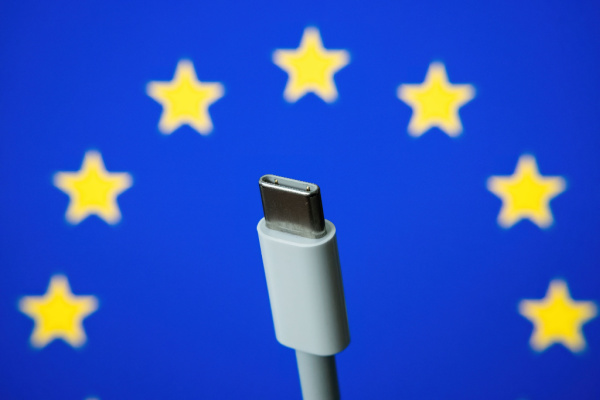In a rare occurrence, Apple has provided a tangible clue about the iPhone’s future. As CNET reports, company executives confirmed that Apple will comply with the European Union’s mandate that all phones in the region adopt USB-C as the common smartphone charging port in 2024. This means that future iPhones will need to shift away from the Lightning connector that’s existed since 2012.
The transition to USB-C seems inevitable for the iPhone given the EU’s new requirements. Greg Joswiak, Apple’s senior vice president of worldwide marketing, speaking at the Wall Street Journal Tech Live conference, said that the company has “no choice” and that Apple would “comply with local laws” as it does around the world. But that doesn’t necessarily mean the Lightning cable is becoming extinct just yet. The Lightning port may play a bigger role in Apple’s lineup than you might expect, thanks to the multitude of accessories that still use it and the popularity of older iPhones.
It’s no secret that USB-C has become increasingly common on Apple products. It’s present on every iPad in the company’s current portfolio except for the ninth-generation iPad from 2021. You’ll find USB-C ports on Apple’s MacBook Pro and Air lineup as well.
According to CNET, both consumers and tech critics have been waiting for USB-C to arrive on the iPhone. An iPhone X that had been modified with a USB-C port even sold for $86,001 on eBay last year. After all, why wouldn’t you want to use the same cord to charge your iPhone, iPad and Mac? The EU’s new mandate represents a step toward a simpler charging experience in the long term. Yet there’s also a chance the transition period could cause some friction as consumers potentially bounce between chargers to power new iPhones alongside legacy accessories.
There are a handful of products that require a Lightning connection for wired charging, aside from the iPhone. Such devices include AirPods earbuds, the AirPods Max, the first-generation Apple Pencil (which is oddly the only model that works with the new USB-C-equipped iPad), the Magic Mouse, Magic Trackpad and Magic Keyboard. That means owners of these devices might still find themselves swapping cables if they purchase an iPhone with USB-C in the future.
It’s also important to remember that not every iPhone shopper opts for the newest model. Apple often discounts older versions once a new iPhone arrives. Even though many shoppers may flock to the newest iPhone, there’s a considerable market for older iPhones. Refurbished iPhones are also popular, with Apple accounting for more than 40% of the global market for secondary phones, according to a separate Counterpoint Research report. People may also be inclined to hold onto their current phones for longer as inflation cuts into other daily expenses.
The more legacy iPhones remain in use, the more Lightning cables will remain in circulation.
Over the long term, the move to USB-C will be an improvement for iPhone owners. The change will make it possible to charge most recent iPads, Macs and eventually iPhones with a single cable – which is precisely why the EU made USB-C mandatory in the first place. The switch also comes at an ideal time considering iPhones are becoming less reliant on wired connections thanks to improvements in wireless charging, the increased popularity of Bluetooth accessories and Apple’s new MagSafe connection system.
But transitions like these take time. And there are still many unanswered questions about how Apple will comply with the EU’s decision. For example, we don’t know whether Apple will make the switch to USB-C in 2023 or if it will wait until 2024. We don’t know if Apple will use USB-C specifically for European iPhones or if it will become the standard globally.
What does seem clear, however, is that the arrival of a USB-C iPhone may be a step toward using one universal cable for everything. It just won’t happen overnight.
—
Photo Credit: mundissima / Shutterstock.com
